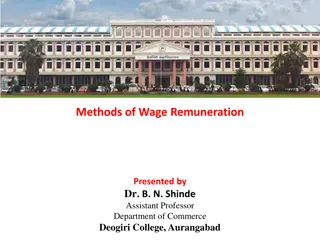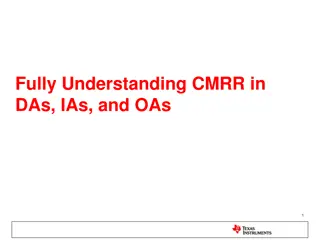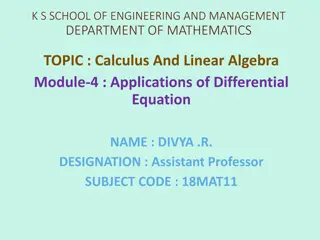Analysis of Taylor's Differential Piece Rate System in Incentive Schemes
The Differential Piece Rate System introduced by Taylor in the field of scientific management aimed to reward efficient workers with higher piece rates for higher production while penalizing slow workers with lower rates. This system, based on time and motion studies, incentivized workers to complete tasks within standard time, with higher rates for timely completion and lower rates for delays. Despite its harshness towards inefficient workers, the system's drawbacks led to its decline in usage over time.
Download Presentation

Please find below an Image/Link to download the presentation.
The content on the website is provided AS IS for your information and personal use only. It may not be sold, licensed, or shared on other websites without obtaining consent from the author. Download presentation by click this link. If you encounter any issues during the download, it is possible that the publisher has removed the file from their server.
E N D
Presentation Transcript
Incentive Schemes or Plans Presented by Dr. B. N. Shinde Assistant Professor Department of Commerce Deogiri College, Aurangabad
Incentive Schemes or Plans I) Taylor s Differential Piece Rate System Differential Piece Rate System was introduced by Taylor, the father of scientific management. The underlying principle of this system is to penalize a slow worker by paying him a low piece rate for low production and to reward an efficient worker by giving him a higher piece rate for a higher production. Taylor was of the view that an inefficient worker should have no place in the organization and he should be compelled to leave the organization by paying him a low piece rate for low production.
Continue Taylor proceeded on the assumption that through time and motion study it is possible to fix a standard time for doing a particular task. To encourage the workers to complete the work within the standard time, Taylor advocated two piece rates, so that if a worker performs the work within or less than the standard time, he is paid a higher piece rate, and if he does not complete the work within the standard time, he is given a lower piece rate.
Continue Taylor decided to give a large reward to those who would complete the work within or less than the standard time and much less wages to those who would not complete the job within the standard time. The system is very harsh to the inefficient workers because they earn much less wages on account of lower output and lower rate.
Continue Moreover, guaranteed under this method. Another drawback of the system is that if a worker just fails to complete the work within the standard time earns much less wages than a worker who just completes the job within the standard time. Therefore, the system is now almost out of use. minimum wages are not
Continue Under this system two widely differing wage rates are fixed. The lower rate is @83% of the normal piece rate and higher rate @125% of the normal piece rate and sometimes 50% of the wage rate is added in it. These percentages may vary concern to concern as per their convenience. As there are two different piece rates are used the system is called as differential piece rate system. For operating this system the efficiency of worker is measured either by using the formula. Standard Time 100 Or Actual Time Taken Actual Output 100 Standard Output
To Calculate the wages under this method following formula is used Wages = Units produced Applicable Higher or lower rate per unit = U R For Example: If piece rate is Rs. 2 per unit Standard production is 100 units per day of 8 hours. Worker x produced 75 units and worker Y produced 140 units. Then, the worker s wages under Taylors differential piece rate system can be calculated as under: Normal Rate Rs. 2 per unit. Lower Rate 2 83% = 1.66 per unit for production less than 100 units. Higher Rate 2 125% = 2.50 per unit for production more than 100 units. X s Wages = 75 1.66 = Rs. 124.50 Y s Wages = 140 2.50 = Rs. 350.00
II)Halsey Plan Under Halsey Plan, the standard time for the completion of a job is fixed and the rate per hour is then determined. If the time taken by a worker is more than the standard time, then he shall be paid according to the time rate, i.e. time taken multiplied by the rate per hour. In Halsey plan, the guaranteed even if the output of a worker is below the standard. time wages are
Continue In case, the worker completes the works in less than the standard time, then he/she will be paid according to the actual time, i.e. time- rate plus the bonus calculated at a specified percentage of the saved time. Generally, the bonus percentage percent. The usual bonus share paid to the worker is 50% of the time saved multiplied by the rate per hour (time-rate). varies from 30-70
To Calculate the wages under this method following formula is used- Wages = (Time Taken Rate per hour) + Standard Time Time Taken Rate per hour = TR + S T Rate 2 2 For Example : If, the standard time is fixed - 8 hours The time taken is - 6 hours The time rate is - Rs. 10 per hour The wages under Halsey plan would be 2 = 60 + 10 = 70 Wages = TR + ( S T ) Rate 2 = (6 10) + ( 8-6 ) 10
III) Rowan Plan Under this method standard time is pre fixed , like Halsey plan the day wages are guaranteed and the bonus is paid for time saved. The bonus is paid in proportion of the time wages as time saved bears to the standard time. Under this method the wages are calculated by using following formula Wages = ( Time Taken Rate per hour ) + Standard time Time taken Standard time Time taken Rate For example If standard time is 12 hours Rate per hour is Rs. 14 Time taken is 8 hours. Then, the wages under Rowan plan would be Wages = ( Time Taken Rate per hour ) + Standard time Time taken Standard time Time taken Rate 12 = 112 + 37.33 = 149.33 (8 14 ) + 12 8 8 14
On the basis of the following information calculate the earning of Ganesh and Dinesh on the Straight Piece rate basis and Taylor s differential piece rate system. Standard Time Rate Normal Time Rate Differential to be applied 80% of piece rate below standard 120 % of piece rate at or above standard 8 units per hour Rs. 4 per hour In a 9 hour day, Ganesh produces 54 units and Dinesh produces 75 units.
Solution: Workings: Calculation of piece rate = 4 / 8 = 0.50 Standard production= 8 units per hour * 9 hours (working day) = 72 units Calculation of rate lower and higher rate: Lower rate 0.50 * 80/100 = 0.40 per unit Higher rate = 0. 50 * 120 /100 = 0.60 per unit
Calculations of earnings: A) Under straight piece rate method: i) Ganesh = 54 *0.50 =Rs. 27 ii)Dinesh = 75 units * 0.50 piece rate= 37.50 B) Under Taylor s piece rate method: i) Ganesh= 54 * 0.40 =Rs.21.60 ii) Dinesh = 75 * 0.60 = Rs. 45.00























